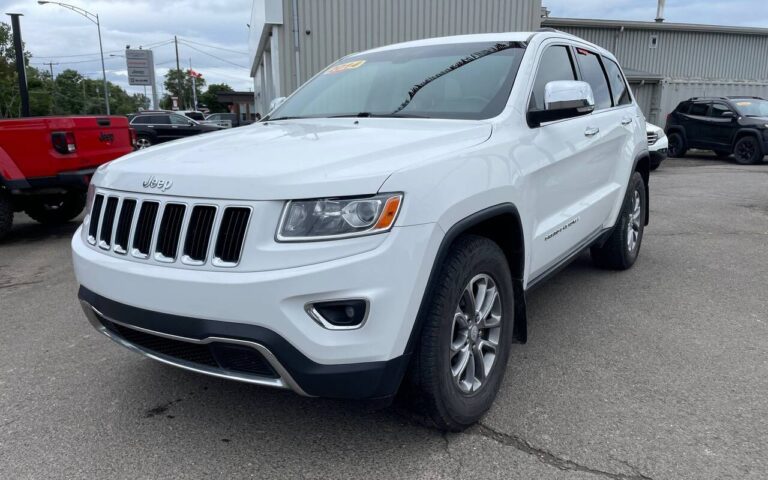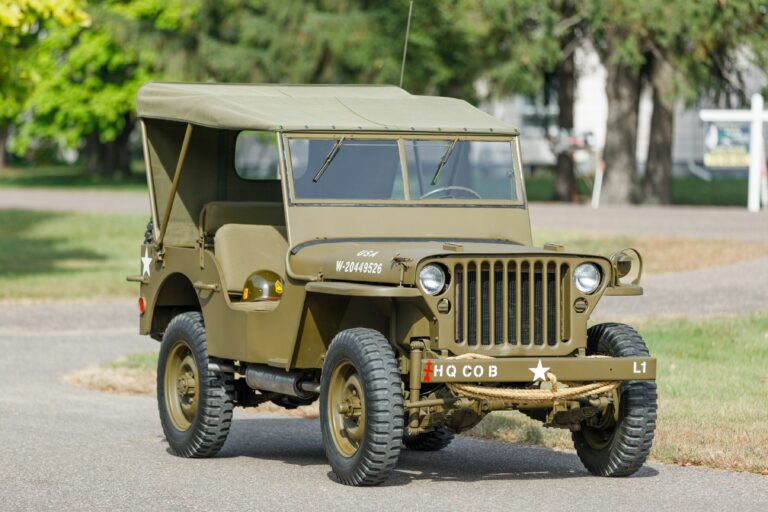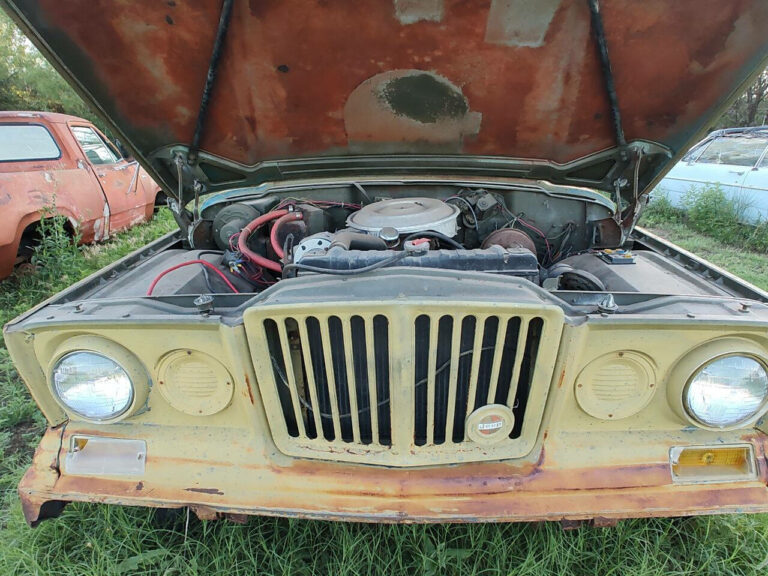Jeep Wrangler XJ For Sale: Unraveling the Legend of the Unibody Icon
Jeep Wrangler XJ For Sale: Unraveling the Legend of the Unibody Icon /jeeps.truckstrend.com
When the phrase "Jeep Wrangler XJ For Sale" surfaces in conversations or online searches, it often sparks a moment of clarification among Jeep enthusiasts. While the "Wrangler" evokes images of open-air adventures and removable tops, and the "XJ" is indelibly linked to a different, yet equally legendary, Jeep model, the combination points to a common, understandable conflation. Let’s set the record straight: the "XJ" designation refers specifically to the Jeep Cherokee, a groundbreaking unibody SUV produced from 1984 to 2001. The Jeep Wrangler, while sharing a rugged spirit, is a separate line of body-on-frame vehicles (YJ, TJ, JK, JL generations).
However, the enduring popularity and off-road prowess of the Cherokee XJ often place it in the same conversation as its Wrangler brethren, particularly for those seeking a capable, customizable, and affordable off-road platform or a reliable daily driver with heritage. This article will dive deep into what makes the Jeep Cherokee XJ a highly sought-after vehicle in the used market, offering comprehensive insights for anyone looking to acquire this iconic American SUV. We’ll explore its enduring appeal, crucial buying considerations, where to find them, and what to expect in terms of pricing and maintenance.
Jeep Wrangler XJ For Sale: Unraveling the Legend of the Unibody Icon
Why the Jeep Cherokee XJ Remains a Sought-After Vehicle
Despite production ending over two decades ago, the Jeep Cherokee XJ commands a loyal following and a robust presence in the used vehicle market. Its appeal stems from a unique blend of attributes that few other vehicles can match:
- Legendary Reliability (The 4.0L Inline-Six Engine): The heart of most XJs, the 4.0-liter AMC inline-six engine, is widely regarded as one of the most durable and dependable engines ever produced. With proper maintenance, it’s not uncommon to see these engines surpass 200,000, 300, or even 400,000 miles. Its robust design and ample low-end torque make it ideal for both daily driving and off-road crawling.
- Unmatched Off-Road Capability (Stock and Modified): The XJ’s relatively compact size, excellent approach and departure angles, and solid front (Dana 30) and rear axles (Dana 35, Chrysler 8.25, or rare Dana 44) provide impressive off-road prowess right off the showroom floor. Its unibody construction, while different from a traditional frame, offers a surprisingly rigid platform that performs well on trails.
- Unparalleled Customization Potential: The aftermarket support for the Cherokee XJ is immense. From lift kits, heavy-duty bumpers, and rock sliders to engine performance upgrades and axle swaps, virtually any modification imaginable is available. This makes the XJ a blank canvas for off-road enthusiasts to build their dream rig.
- Practicality and Daily Drivability: Unlike many dedicated off-roaders, the XJ offers a comfortable ride (for its era), decent cargo space, and a relatively compact footprint, making it a viable daily driver for many. Its boxy design maximizes interior volume.
- Affordability: Compared to newer SUVs or even later-model Wranglers, a used Cherokee XJ can be acquired at a significantly lower price point, making it an accessible entry into the world of capable 4x4s.
- Nostalgia and Classic Status: The XJ has achieved cult classic status, appealing to those who appreciate its rugged, no-nonsense design and its place in automotive history.

Key Considerations When Buying a Used Jeep Cherokee XJ
Purchasing an XJ requires a keen eye and an understanding of its common quirks and potential issues. A thorough inspection is paramount to ensure you’re getting a good deal and not inheriting a money pit.
- Rust: This is arguably the biggest enemy of the XJ. Inspect the unibody frame rails, rocker panels, floorboards (especially under the carpet), rear quarter panels, and door jambs. Rust can compromise structural integrity and be costly to repair. Pay extra attention to examples from areas with harsh winters or coastal climates.
- Engine (4.0L I6): While robust, look for signs of a leaking rear main seal (common, often not severe), valve cover gasket leaks, and oil filter adapter leaks. Check for coolant leaks around the thermostat housing and water pump. Listen for excessive ticking or knocking noises, especially on startup. Ensure oil pressure is healthy (around 40 PSI at speed, 10-20 PSI at hot idle).
- Transmission:
- AW4 Automatic: Very reliable. Check fluid color and smell (should be red, not burnt). Test engagement in all gears and listen for harsh shifts or slipping.
- AX15 Manual: Also durable. Check for smooth shifts, clutch engagement, and unusual noises.

- Transfer Case (NP231 vs. NP242):
- NP231 Command-Trac: Part-time 4WD (2WD, 4-Hi Part-Time, 4-Lo Part-Time). More common and generally stronger for serious off-roading.
- NP242 Selec-Trac: Offers full-time 4WD (2WD, 4-Hi Full-Time, 4-Hi Part-Time, 4-Lo Part-Time). Great for varied conditions but can be slightly less robust under extreme stress. Test all modes to ensure engagement.
- Axles:
- Front (Dana 30): Generally strong enough for most uses. Check for leaky differential seals.
- Rear (Dana 35, Chrysler 8.25, Dana 44): The Dana 35 is the weakest; the Chrysler 8.25 (found in many later models with ABS) is stronger, and the Dana 44 (rare, often on older models or with tow packages) is the strongest. Listen for humming or grinding noises, indicating worn gears or bearings.
- Suspension and Steering: Check leaf springs (rear) and coil springs (front) for sag. Inspect bushings, tie rod ends, ball joints, and steering box for excessive play. Listen for clunks or squeaks over bumps.
- Electrical Gremlins: Common issues include power window motors, gauge cluster malfunctions, intermittent wipers, and problematic grounds. Test all electrical components.
- Interior Wear: Headliner sag is almost universal. Check seat condition, dash cracks (especially pre-1997 models), and carpet wear.
- Previous Modifications: Be wary of poorly executed lifts or modifications. Look for quality components, proper welding, and correct geometry. A well-modified XJ can be a great find, but a poorly modified one can be a headache.
Where to Find a Jeep Cherokee XJ For Sale
Finding the right XJ often requires patience and knowing where to look:
- Online Marketplaces: Facebook Marketplace, Craigslist, and eBay Motors are prime hunting grounds. Set up search alerts for new listings.
- Dedicated Forums and Social Media Groups: Many Jeep-specific forums (e.g., CherokeeForum.com, NAXJA.org) and Facebook groups are excellent resources, often listing enthusiast-owned vehicles that are well-maintained.
- Private Sellers: Often the best source for finding unmolested or carefully modified examples, as owners tend to be more transparent about the vehicle’s history.
- Used Car Dealerships: Less common for clean XJs, as many are older and don’t fit typical dealer inventory. Those found here might be cheaper but require more scrutiny.
- Auctions: Public or online auto auctions can sometimes yield good deals, but research is critical as you often can’t test drive.
Tips for Inspecting and Test Driving an XJ
- Bring a Flashlight and Magnet: Use the flashlight to inspect dark areas for rust, and the magnet to check for bondo over rust spots (it won’t stick to bondo).
- Cold Start: Always try to see the vehicle when the engine is cold to identify startup noises, smoke, or hard starting.
- Check Fluids: Oil, transmission fluid, coolant, power steering fluid – check levels and condition.
- Engage 4WD: Drive in a safe area (gravel or dirt is best, avoid pavement in part-time 4WD) and engage all 4WD modes to ensure they work smoothly. Listen for clunks or grinding.
- Test Drive: Pay attention to steering slop, braking performance, suspension noise, and engine/transmission behavior. Drive over bumps to test suspension.
- Professional Pre-Purchase Inspection (PPI): For serious contenders, consider having a trusted mechanic (ideally one familiar with Jeeps) perform a PPI. It’s a small investment that can save you thousands.
Understanding XJ Trim Levels and Options
The Cherokee XJ came in numerous trim levels throughout its production, offering varying levels of comfort and features:
- Pioneer/Base: Basic models, often with manual windows and simpler interiors.
- Sport: A popular mid-range trim, offering a good balance of features and often equipped with the 4.0L engine.
- Laredo: More upscale, with power accessories, upgraded interiors, and often chrome trim.
- Limited/Country: Top-tier trims with leather seats, full power options, premium sound, and often woodgrain accents.
- Classic: A later trim level (1996-2001) that blended features from Sport and Limited.
Key distinctions between pre-facelift (1984-1996) and facelift (1997-2001) models:
- Pre-Facelift: Boxier, older interior design, sometimes with weaker Dana 35 rear axles.
- Facelift (1997-2001): Updated interior (nicer dash, full console), improved body styling (rounded headlights, different taillights), often with the stronger Chrysler 8.25 rear axle. These are generally more desirable due to refinements and stronger axles.
Estimated Price Guide for Jeep Cherokee XJ For Sale
The price of a Jeep Cherokee XJ varies significantly based on condition, mileage, year, trim level, modifications, and region. Here’s a general guide:
| Condition | Description | Estimated Price Range (USD) |
|---|---|---|
| Poor / Parts Vehicle | Significant rust, major mechanical issues, non-running, or heavily damaged. | $500 – $2,000 |
| Fair / Project | Running but needs substantial work (rust repair, major mechanical fixes, significant cosmetic issues). | $2,000 – $5,000 |
| Good / Driver | Runs well, minor mechanical issues, some rust or cosmetic flaws, suitable as a daily driver. | $5,000 – $9,000 |
| Excellent / Clean | Minimal rust, well-maintained mechanically, clean interior and exterior, potentially stock or tastefully modified. | $9,000 – $15,000+ |
| Restored / Highly Modified | Professionally restored, significant high-quality off-road modifications, low mileage, collector-grade. | $15,000 – $30,000+ |
Note: Prices can fluctuate based on market demand, location, and specific features (e.g., manual transmission, specific axle upgrades).
Maintaining Your XJ Post-Purchase
Owning an XJ means joining a vast and supportive community. Routine maintenance is key to its longevity. Be prepared for:
- Oil Changes: Regular synthetic oil changes for the 4.0L are crucial.
- Cooling System: The XJ’s cooling system is notoriously sensitive. Keep it in top shape with regular flushes, good quality coolant, and a healthy radiator/water pump.
- Fluid Checks: Regularly check all fluid levels (transmission, transfer case, differentials).
- Greasing: Many suspension components have grease zerks that need periodic lubrication.
- Rust Prevention: If you live in a rust-prone area, consider undercoating or rust inhibitors.
Many common XJ fixes are well-documented online, and parts are generally affordable and readily available, making it a great vehicle for DIY mechanics.
Conclusion
While the term "Jeep Wrangler XJ For Sale" might be a misnomer, it perfectly encapsulates the spirit of searching for a truly iconic and capable off-road vehicle. The Jeep Cherokee XJ, with its legendary 4.0L engine, robust drivetrain, and unmatched customizability, stands as a testament to American automotive engineering. It’s more than just an old SUV; it’s a blank canvas for adventure, a reliable workhorse, and a burgeoning classic.
For prospective buyers, thorough research, diligent inspection, and a clear understanding of the XJ’s common traits are essential. With the right approach, you can find a gem that will provide years of reliable service, off-road excitement, and a deep connection to a passionate community. The XJ isn’t just a vehicle; it’s a lifestyle.
Frequently Asked Questions (FAQ) about the Jeep Cherokee XJ
Q1: Is the Jeep Cherokee XJ the same as a Jeep Wrangler?
A1: No, they are distinct models. The "XJ" refers to the Jeep Cherokee (1984-2001), a unibody SUV. The "Wrangler" is a separate line of body-on-frame, open-top Jeeps (YJ, TJ, JK, JL generations). While both are highly capable off-road, their fundamental construction and design differ.
Q2: What is the most reliable year for a Jeep Cherokee XJ?
A2: Generally, the 1997-2001 "facelift" models are considered highly desirable due to interior and exterior refinements, improved electrical systems, and often the stronger Chrysler 8.25 rear axle. However, earlier 4.0L models (especially 1991-1996 with the high output 4.0L) are also very reliable.
Q3: What are the most common problems with the Jeep Cherokee XJ?
A3: The most common issues include rust (especially on rocker panels and unibody frame rails), rear main seal oil leaks (4.0L engine), headliner sag, and cooling system issues (prone to overheating if not maintained). Electrical gremlins (power windows, gauges) can also occur.
Q4: How much lift can I put on an XJ?
A4: Most XJ owners choose lift kits between 3 to 6 inches for a good balance of off-road capability and daily drivability. Taller lifts require more extensive modifications (e.g., slip yoke eliminator, longer control arms, upgraded steering) to maintain proper geometry and driveline angles.
Q5: Is the 4.0L inline-six engine truly reliable?
A5: Yes, the 4.0L AMC inline-six engine is legendary for its durability and longevity. With regular oil changes and proper maintenance of the cooling system, it’s common to see these engines last well over 200,000 to 300,000 miles.
Q6: What’s the difference between the NP231 and NP242 transfer cases?
A6: The NP231 Command-Trac is a part-time 4WD transfer case with 2WD, 4-Hi Part-Time, and 4-Lo Part-Time modes. It’s generally preferred for serious off-roading. The NP242 Selec-Trac offers an additional "4-Hi Full-Time" mode, allowing 4WD use on pavement, in addition to the part-time modes.
Q7: Can a Jeep Cherokee XJ be a good daily driver?
A7: Yes, many XJ owners use them as daily drivers. They offer decent comfort (for their age), reasonable fuel economy (for a 4×4), and practical cargo space. However, expect a more rugged ride and fewer modern amenities compared to contemporary SUVs.
Q8: Are parts for the XJ hard to find?
A8: No, parts for the XJ are generally abundant and affordable, both new aftermarket and used OEM, thanks to its long production run and popularity. This makes maintenance and modifications relatively easy.
![]()



